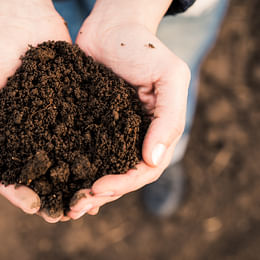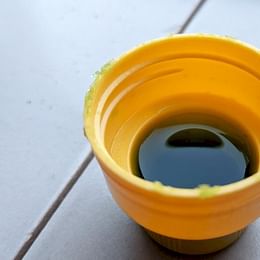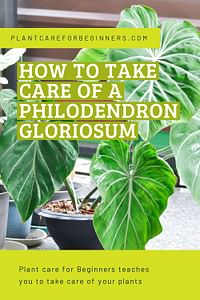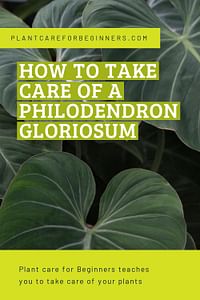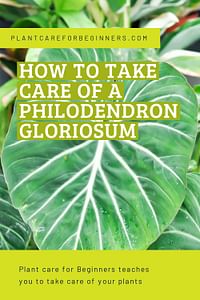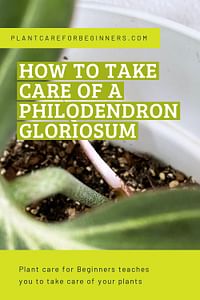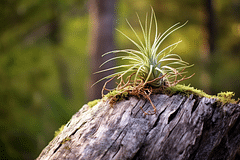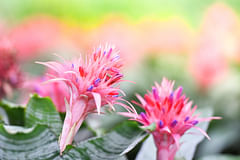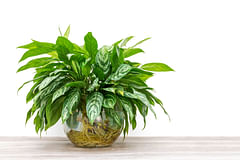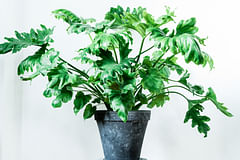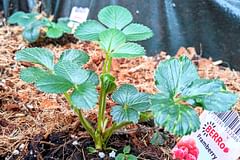How To Take Care Of A Philodendron Gloriosum Houseplant Indoors
If you're looking for an easy-to-care-for houseplant that has beautiful, giant green leaves, the Philodendron Gloriosum is perfect for you! This variety of Philodendron is native to Colombia and can reach lengths of a few meters indoors.
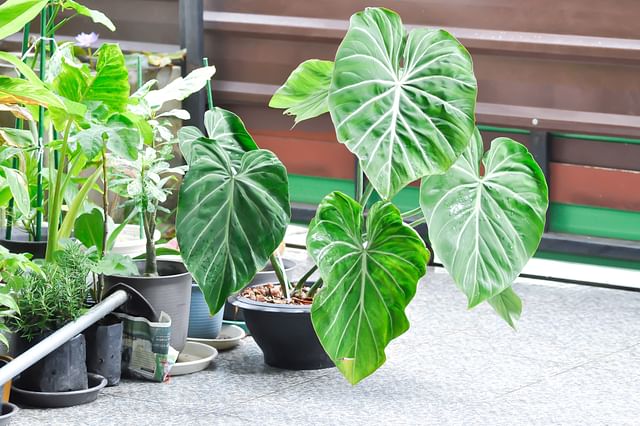
If you're looking for a new houseplant that has giant green leaves, the Philodendron Gloriosum is the right plant for you! This variety of Philodendron is sometimes called the "chandelier plant" because of its elegant dangling leaves. This gorgeous-looking plant might look like it belongs in the jungle (surprise, that's where it's from), but it also grows well indoors and would be a fantastic addition to your living spaces!
The Philodendron Gloriosum is a fast-growing climber that can reach up to 10 feet in length, so it's perfect for filling empty spaces on shelves or bookcases. As with all Philodendrons, the Gloriosum is very easy to care for and is tolerant of neglect, making it a great choice for beginner plant parents. Keep reading to learn everything you need to know about how to take care of a Philodendron Gloriosum!
In this plant care guide, we're going to look at a few different aspects of taking care of a Philodendron Gloriosum. We'll explore these topics:
Let's get into the topics to learn how you can take care of your Philodendron Gloriosum to help it thrive!
Watering a Philodendron Gloriosum
Like many tropical houseplants, your Philodendron likes its soil to be lightly moist most of the time. This makes it quite easy to find out when you need to water your plant because you can check whether the soil is dry or not. If the top 2.5 cm (1 inch) is dry, it's time to water your plant again. This typically translates to watering approximately once a week, but it's important to monitor the plant's moisture needs and adjust the frequency accordingly.
Make sure you're using a well-draining pot and potting mix, as this plant does not like to sit in soggy soil. Overwatering can cause the leaves to turn yellow and drop off, so be sure to err on the side of underwatering rather than overwatering. Also, be sure to use filtered or distilled water if your tap water is high in chlorine or minerals. Too much chlorine or minerals can damage the leaves of your plant.
Light requirements for a Philodendron Gloriosum
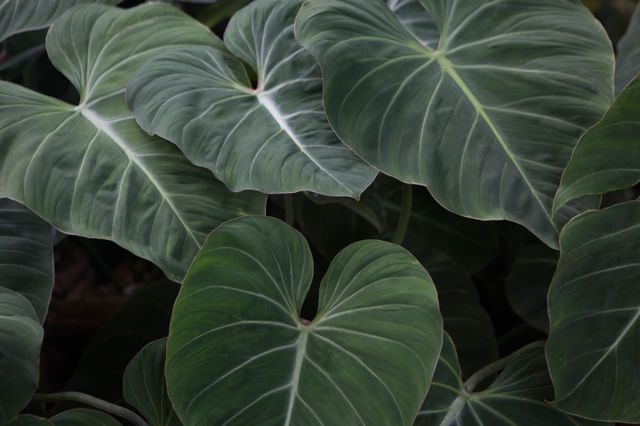
The Philodendron Gloriosum is a plant that naturally grows on the ground in the jungle. This is where it's shaded from the sunlight by the trees that tower over it. This gives us a great clue about the type of sunlight exposure the Philodendron Gloriosum prefers.
The Philodendron Gloriosum prefers bright, indirect light but can also tolerate low light conditions. If you live in a place with very low light (like an apartment with only north-facing windows), you can grow your Philodendron Gloriosum near a window.
You'll know if your Philodendron Gloriosum is getting too much light if the leaves start to turn yellow. This is when you know it's time to move your Philodendron to a shadier spot.
On the other hand, if the leaves are drooping and beginning to look pale, that means it's not getting enough light. In this case, you'll need to move it to a brighter spot. Another, more subtle, clue that your plant isn't getting enough sunlight is the fact that its leaves will start to grow towards the nearest light source. The stems and leaves will look like they're reaching for the light, just to get enough of it.
The best temperature and humidity for a Philodendron Gloriosum
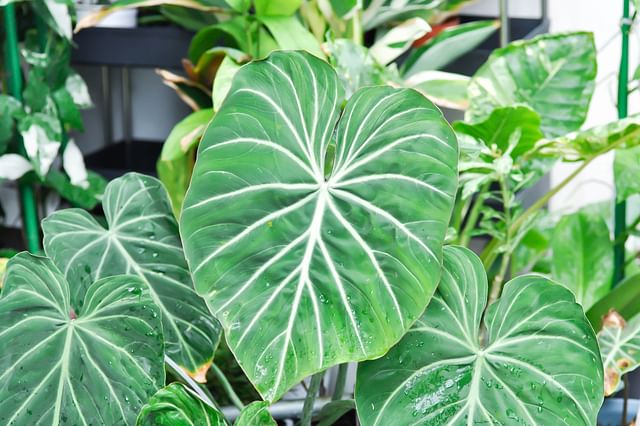
A Philodendron Gloriosum is a tropical plant that prefers warm temperatures between 18-25 degrees Celsius (65-85 degrees Fahrenheit) and high humidity levels around 60-70%. If your home is on the drier side, you can increase humidity levels by grouping your plants together or by placing them on a pebble tray filled with water. Just make sure the bottom of your plant's pot is not sitting in water as this can lead to overwatering. You can also use a humidifier to raise humidity levels in your home.
If you need other ideas to raise the humidity levels in your house, you can have a look at "10 ways to raise the humidity in your house".
The best type of soil for a Philodendron Gloriosum
In the first section about watering, we found out that the best type of soil is well-draining potting soil. This type of soil mix helps to drain the excess water to the bottom of the pot quickly, rather than staying behind in the soil.
However, the Philodendron does prefer slightly moist soil at all times, so the soil shouldn't drain all the moisture right away, as a soil mixture for cactus and succulents would. It should still hold onto some moisture for a few days after you've watered it.
You can buy a potting mix specifically for moisture-loving houseplants, or you can make your own mix by combining one part potting soil, one part peat moss, and one part perlite. This soil mix provides excellent drainage for the excess moisture, but retains enough moisture to keep your Philodendron Gloriosum happy!
Fertilizing your Philodendron Gloriosum
Fertilizing your plants helps them to grow big and strong, and can also help them to resist disease and pests. So it's quite important to regularly fertilize your houseplants! But when and how often should you fertilize your Philodendron Gloriosum?
During the growing season (spring and summer), you should fertilize your Philodendron Gloriosum every two weeks with a liquid fertilizing solution. Liquid fertilizer helps you to control the dosage of fertilizer with water and it's much easier to absorb for your plants.
During the fall and winter, you should not fertilize your Philodendron at all, because this can lead to overfertilizing. Overfertilizing can damage the roots of your plant and this could kill it.
Potting and repotting your Philodendron Gloriosum
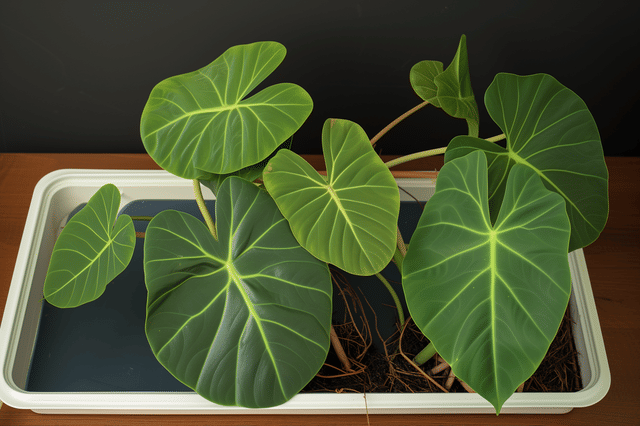
Potting and repotting are critical in the care of a Philodendron Gloriosum, as they make sure your plant has enough space to grow and that the soil conditions remain optimal. Here's what you need to know:
Choosing the right pot size
The pot size should be proportional to the size of your plant's root system. A pot that is too large will hold too much moisture, which can lead to root rot. As a rule of thumb, select a pot that is about 1-2 inches larger in diameter than the current one.
Think about drainage
Good drainage is essential to prevent water collection at the bottom of the pot, which can cause root problems. Always choose a pot with drainage holes. However, if you can't find a good one, you can consider adding a layer of coarse material like gravel or clay pebbles at the bottom of a pot without a drainage hole to make sure the soil isn't standing in water.
The right time to repot
The best time to repot is during the growing season, typically in spring or early summer. Signs that your Philodendron Gloriosum needs repotting include roots growing through the drainage holes, the soil drying out completely in just a few days, or the plant looking top-heavy and tipping over.
Practical repotting tips
If you want to make repotting easier on yourself and your plant, water your plant a day in advance to help the roots slide out more easily. To help remove the plant more easily, remove the plant from its current pot by turning it sideways, supporting the plant with one hand, and gently easing it out. If the plant is stuck, you may need to tap the bottom of the pot or even carefully cut it away.
After removing the plant from the pot, make sure to briefly inspect the roots and trim any that are dead or excessively long. If you notice any signs of disease or rot, remove the affected areas with a clean, sharp tool.
After repotting, place your plant in a spot with bright indirect light and water it to help the plant settle in its new home and reduce shock.
Pruning your Philodendron Gloriosum
Pruning is quite a scary experience for beginning plant owners because it feels wrong to cut leaves off of your plant. It can feel as if you're hurting your plant. Luckily, nothing is further from the truth, because pruning is quite beneficial for your plant. Pruning encourages new growth and keeps your plant looking full and healthy!
Your Philodendron Gloriosum will also benefit from regular pruning to remove any dead or dying leaves as well as any leggy growth. To prune your plant, snip off dead or dying leaves at the base with clean, sharp scissors or gardening shears. You can also cut back any leggy stems to encourage new growth closer to the base of the plant.
When you cut off bad-looking leaves, you help your plant preserve the energy needed to grow new stems and leaves. This helps your plant to grow back new leaves more quickly.
Propagating a Philodendron Gloriosum
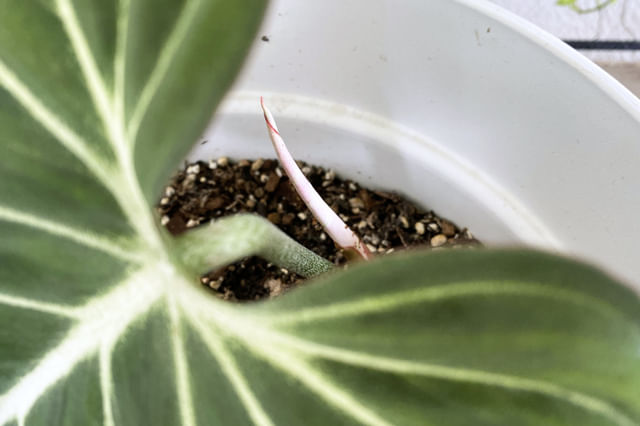
If you want to propagate your Philodendron Gloriosum, stem cuttings are the way to go! The stems of the Philodendron Gloriosum get quite thick, like the stems on a monstera, so this tells you it's full of moisture and nutrients. When propagating the Philodendron Gloriosum, you want to cut through the thick stem with a clean pair of pruning scissors or a clean knife. Be careful if you use a knife, the stem can be quite tough to get through. The ideal cutting has 2-3 leaves attached.
When you're propagating your plant through cuttings, you can give your plant the best chance of growing roots and becoming a real plant by propagating it in water or Leca. It's quite tempting to instantly put your cuttings in soil, but this puts your cutting at risk of attracting diseases, pests, and root rot. Propagating in water or Leca gives your cutting the moisture it needs, with a lower risk of developing root rot.
To give your cutting the best chance of success, refresh the water once per week, so it stays nice and clean. If your tap water contains a lot of minerals, be sure to use distilled water instead. Then place the pot in an area with bright, indirect light and high humidity levels. You can create a mini greenhouse by covering it with plastic wrap or placing it inside a clear zip-top bag.
In 4-8 weeks, you should see new roots growing from the leaf nodes - at which point you can transplant your cutting into its own pot! Be sure to only propagate your Philodendron Gloriosum in the growing season (spring and summer) as it'll get plenty of energy from sunlight and grow roots more quickly.
Support and training for growing upright

Philodendron Gloriosum is a plant that can start to grow horizontally instead of straight up. If you prefer it to grow straight up, there are a few tools and techniques you can use to help your plant:
Staking
Bamboo stakes or other types of stakes can be gently inserted into the soil near the stem of your Philodendron Gloriosum. As the plant grows, you can loosely tie the stem to the stake with soft ties, making sure not to damage the stem.
Trellises
Using a small trellis in the pot can help to support your Philodendron Gloriosum to climb vertically. The trellis will help to support the weight of the leaves as well, so it has an easier time to grow straight up.
Moss poles
My favorite supports are Moss poles. Moss poles are great for Philodendrons because they mimic the plant's natural climbing habits. A moss pole provides a surface for the aerial roots to cling to and draw nutrients from as they would in their native environment.
In the end, what you choose is a personal preference, if you choose any support at all. They're not required but do help you to shape your plant and grow it in such a way that looks good to you.
Is the Philodendron Gloriosum toxic?
The Philodendron Gloriosum is toxic to both pets and people when ingested because of the calcium oxalate crystals it contains. When people ingest it, it can cause a burning sensation in the mouth, swelling of the lips, tongue, and throat, difficulty in swallowing, and in severe cases, nausea, vomiting, and diarrhea. Pets can suffer from oral irritation, excessive drooling, vomiting, and difficulty swallowing.
Because of these risks, you'll need to place your Philodendron Gloriosum in a location where children and pets cannot reach it. If an accident does happen, it's important to immediately contact your GP or veterinarian for advice and follow-up steps.
Common mistakes when caring for a Philodendron Gloriosum
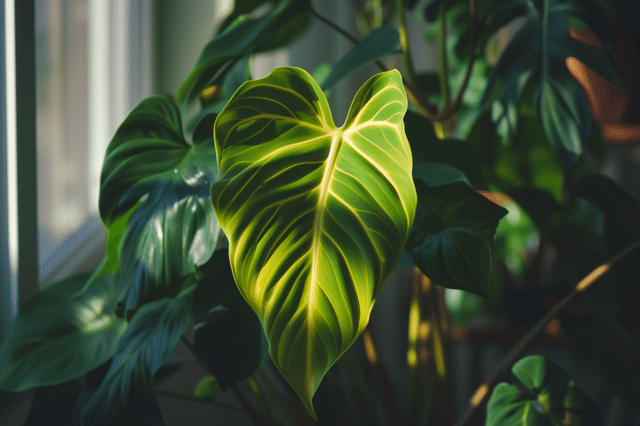
Caring for a Philodendron Gloriosum is amazing, but new plant parents often make a few common mistakes that can harm the health of your plant. Let's see what these common mistakes are so you can be prepared and avoid them.
Overwatering
One of the most common mistakes is overwatering, which can lead to root rot and fungal issues. The Philodendron Gloriosum prefers the top 1-2 inches of soil to dry out before being watered again. Before you water your plant, make sure to check if the top of the soil is dry. If not, wait a few days before watering again.
Too little light
The Philodendron Gloriosum doesn't require direct sunlight, but too little light can stop or slow down their growth and cause leggy stems. Bright, indirect light is ideal for this plant. If you don't get enough light in your home, you can use grow lamps to help give your plant a bit of extra light.
Poor humidity management
These tropical plants thrive in higher-humidity environments. Most beginners often overlook this and this can lead to brown leaf tips and edges. Using a humidifier or pebble tray can help maintain the right environment.
Using the wrong soil mix
The right soil mix is crucial. A mix that doesn't drain well will retain too much moisture. You should opt for a well-draining potting mix to avoid waterlogged roots. You can also make your own mix by combining one part potting soil, one part peat moss, and one part perlite.
Ignoring pests
If you're new to taking care of plants, you might not look out for pests, which can quickly escalate into infestations. You should regularly check for signs of pests to treat your plant as early as possible. We'll look more at pests in the next section to learn about a few specific pests and how to treat them.
Neglecting plant hygiene
Not keeping the leaves clean can make it more difficult for the plant to perform photosynthesis. This makes the plant weak and puts them at risk of being attacked by pests. Gently wiping the leaves with a damp cloth can prevent these issues.
Incorrect Pot Size
Repotting into a too-large pot can increase the risk of overwatering as the soil takes (much) longer to dry out. It's best to choose a pot that's just slightly larger than the root ball.
By avoiding these common care mistakes, you can create a thriving environment for your Philodendron Gloriosum. Remember, plant care is a learning process, and making adjustments as you learn more about your plant's specific needs is all part of the journey. No one gets it right on the first try.
Pests and diseases

The Philodendron Gloriosum can be affected by a range of pests and diseases, including spider mites, mealybugs, and leaf spot diseases. Here's how to identify these issues and manage them:
Spider Mites
These are tiny spider-like pests that can be found on the undersides of leaves, and they often produce fine webs between the leaves or stems. The leaves may appear yellowed or speckled due to the mites feeding off the plant sap. To treat spider mites, wash the leaves with a strong stream of water to dislodge the pests, and use insecticidal soap or neem oil as a way to get rid of the pests.
Mealybugs
Mealybugs look like small cottony masses on the leaf joints, stems, and under leaves. They suck sap from the plant and excrete a sticky substance known as honeydew which can lead to sooty mold. You can treat mealybugs by dabbing individual pests with alcohol-soaked cotton swabs or applying insecticidal soap or neem oil.
Leaf Spots
Leaf spots are typically caused by fungal or bacterial pathogens and appear as discolored, round spots on the leaves. To prevent leaf spots, avoid overhead watering and make sure your plant has good air circulation. Infected leaves should be removed. For severe infections, a fungicide might be the best option to help keep your plant safe. Making sure the plant isn't overcrowded and is in well-draining soil can help keep leaf spots at bay.
When it comes to pests and diseases, prevention is key. Make sure the plant is not in overly damp conditions, provide good airflow, and maintain cleanliness around your plant area. Regularly check your plant for signs of stress or pest activity, and isolate new or affected plants to prevent the spread of pests and diseases. If you're unsure about treating any condition, consult with a local nursery or an expert in houseplant care for advice specific to your situation.
Conclusion
As you can see, taking care of a Philodendron Gloriosum houseplant indoors is not difficult - as long as you provide it with bright indirect light, evenly moist soil, high humidity levels, and regular fertilization during its growing season (spring/summer).
I hope you found this guide helpful! Please share it with your friends and family to help them take care of their plants too. If you have any questions, please don't hesitate to reach out to me. Thanks for reading!
Thank you for reading this post! I hope it helps you to keep your plants healthy and beautiful! If you're looking for more guides on specific plants, you can always request a plant guide to get a guide for the plant you have trouble with.
Test your plant care knowledge
Quiz completed!
Want to learn more? Sign up for my newsletter to receive free tips in your inbox!
Sign up now!